Large Anglo-French White and Orange Hound
The Large Anglo-French White and Orange Hound is a breed specifically bred for hunting. Even now, they are bred for a single purpose - pack hunting. These dogs were never meant to be peaceful family pets, and they feel most comfortable when they have a hunting job to do.
The Large Anglo-French White and Orange Hound are considered a rare breed in the world and their native country of France. They were owned almost exclusively by hunters and hunting clubs. These dogs will need an unbelievable amount of exercise, and they can quickly become bored if they are not allowed to run and hunt. These dogs can be described as:
- Relentless
- Great hunters
- Energetic
- Intelligent
- Independent thinkers
- Difficult to own as pets
- Easy to manage in kennels

Height:
24-28 in (62-72 cm)

Weight:
75-110 lb (34-50 kg)

Origin:
France

Life Expectancy:
12-14 years
Dog Breed Characteristics
The Large Anglo-French White and Orange Hound share many of their characteristics with other French hunting hounds. These dogs are built for stamina and relentless hunting. They have straight muzzles nearly as long as their skull and large, brown eyes. Their ears are set at the same level as their eyes, and they are medium-long and slightly curled at the end.
These dogs have perfectly straight and muscular limbs that enable them to chase and hunt at incredible speed. They have deep, powerful chests and a tail of reasonable length. Both sexes can reach a height of 24 - 28 inches at the withers.
Temperament
The Large Anglo-French White and Orange Hound are known as a true hunting breed, and their temperament might never allow them to become good family or house pets. These dogs need to hunt, and that is the sole purpose this breed was created.
If you are looking to get a hunting pet, there are other options, and it might be pretty hard for you to even get in contact with a Large Anglo-French White and Orange Hound breeder. French hunters love these dogs because of their delicate noses and the ability to hunt in the harshest terrain.
If you decide to get one of these dogs as a pet, we can only assume their character. But if we compare them to other hunting hounds, there is a good possibility that these dogs might have a chance of being good pets with training and socialization.
Scenthounds are usually good with kids and pretty gentle and affectionate with their families. They are highly energetic, and before you even think about training them, you need to satisfy their activity needs. They are alert and might make good watchdogs, but they are not a good guarding breed because they are relatively friendly and easily manageable in kennels.
Training
The Large Anglo-French White and Orange Hound were bred for hunting, and because of that, they will need proper training if you want this breed to develop into a well-behaved, family dog. Also, their high prey drive can be a problem that you will need to take care of.
These dogs can be stubborn, so you will need patience and consistency. They can object to training, but they will eventually do what you expect them to do if you are persistent. They are independent thinkers, a trait that was expected of them when hunting in packs.
When training a Large Anglo-French White and Orange Hound, make sure you use positive training methods. Never use fear, punishment, or pain because not only is it cruel, it can result in an overly shy or even aggressive dog. Be firm, fair, and consistent, but use only positive reinforcement!
These dogs are eager to do whatever their people ask of them. Involve as many treats as you can and keep the training sessions interesting. They have natural hunting instincts, so only slight adjustments are needed to train these dogs for hunting.
Socialization
When socializing a Large Anglo-French White and Orange Hound, you shouldn’t have too many problems because these dogs have been working with other dogs for years, and they generally get along great with them. Strange dogs can be met with carefulness, and these dogs won’t back down if provoked.
They can be shy when it comes to strangers, but early socialization can teach them that strangers are nothing to be afraid of.
Socialization can even be done at home. Dress differently; wear glasses, hats, and baggy clothes so your puppy can’t recognize you right away. Teach your puppy to stay alone for a while and not make a fuss about it. It is the best way to make sure your puppy will grow up to be a stable, confident, and well-behaved dog.
Large Anglo-French White and Orange Hound and other pets
When it comes to other dogs, the Large Anglo-French White and Orange Hound has no issues and even prefers to have other dogs’ constant company. If you are thinking about getting one of these dogs, it might be useful to think about getting them some company.
They will get along with just about any breed and with dogs of both sexes. Their philosophy is “the more, the merrier.” If your dog has some company, it is less likely to get in trouble and misbehave while you are away. They are also less likely to be bored and less likely to develop separation anxiety.
If you already have other pets like cats, bunnies, ferrets, gerbils, or guinea pigs at home, you might want to rethink your dog breed choice. No matter how well your Large Anglo-French White and Orange Hound is trained or socialized, it will never be an excellent companion to other smaller pets. These dogs have a powerful prey drive that will make them see other pets as prey.
They will most likely chase them, and that can have terrible consequences.
Large Anglo-French White and Orange Hound and kids
Early socialization and proper training can teach them to behave even when children are around. Their temperament makes them more suitable for families with older children. If you train and socialize your dog well, your children will get a great playing partner that has plenty of energy. These dogs can play for hours upon hours without getting tired or bored.
These dogs are not the best choice if you have smaller kids. They can be gentle but can easily get riled up from the action and noises that come with having active toddlers at home. These are hunting dogs that aren’t bred to be pets, so we can only guess what can happen when they interact with small kids, but that is a risk no one should take.
Children should never be left alone with any dog, no matter what breed it might be. You should make sure that your children understand how to approach dogs of this breed and understand how to interact and play with them properly.
Health problems
The Large Anglo-French White and Orange Hound is generally considered a healthy breed, but they are prone to some health issues and concerns like any other dog breed. These dogs have an average lifespan of 12 - 14 years.
Health problems associated with this breed are;
- Hip dysplasia - Genetic problem affecting hips resulting from an improperly formed hip joint.
- Ear infections - Especially for dogs that love water, you need to check their ears regularly for signs of infections or redness.
- Entropion - A defect causing the eyelid to roll inward.
- Ectropion - A defect causing the eyelid to roll out or sag.
- Allergies - These dogs are prone to allergic reactions to specific foods, products, or medications.
- Hound ataxia - The loss of coordination and balance due to sensory dysfunction.
- Patellar luxation - Kneecap that moves out of its predefined place.
- Gastric Torsion - Also known as bloat. A dangerous condition that causes the stomach to twist (torsion).
- Cryptorchidism - Disorder that prevents one or both testicles from descending.
Breeders
Getting a hold of a Large Anglo-French White and Orange Hound might be a challenging task. Most of them are French, and it might be challenging to get them to sell their dogs as pets. If you manage to get in touch with breeders, make sure they have all the necessary health tests to ensure that your new hunting partner will be as healthy as possible.
World Dog Finder team

Updated at04.09.2023.
Breed History
The Large Anglo-French White and Orange Hound is a result of cross-breeding the Billy breed and the English Foxhounds in the late part of the 19th century. The standard for this breed was written in 1957.
Their original French name is “Grand Anglo-Français Blanc et Orange.” It is a relatively large dog that should have a very knowledgeable owner. These dogs were used for hunting wild boar, roe deer, red deer, and smaller game like the foxes.
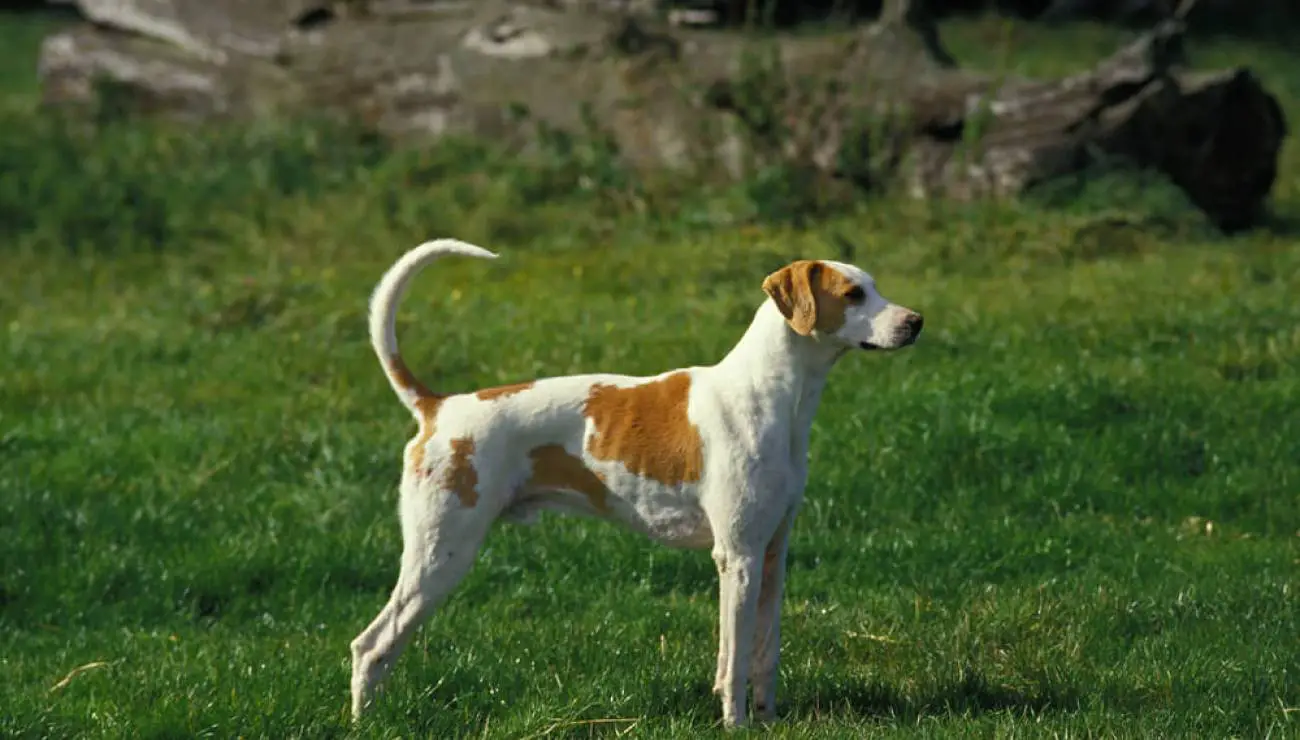
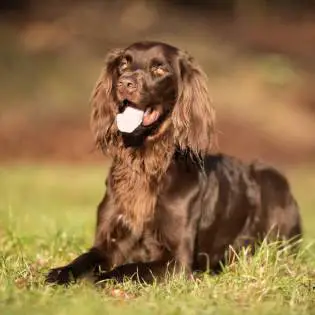
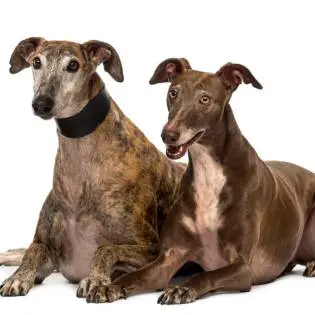
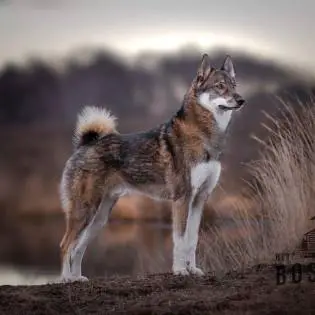
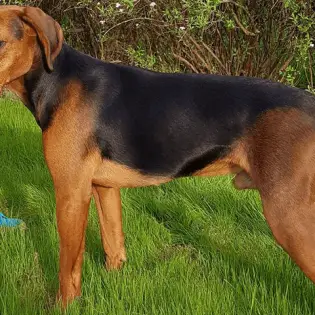
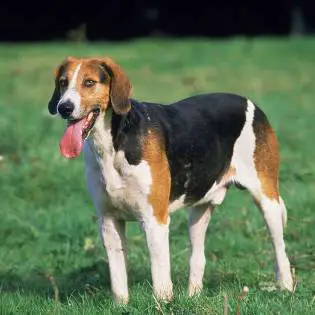
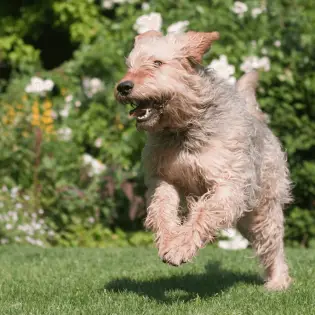
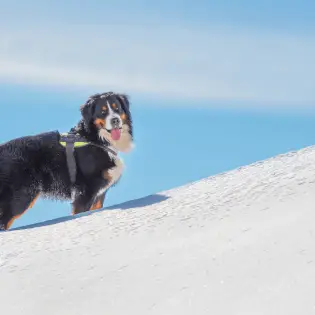
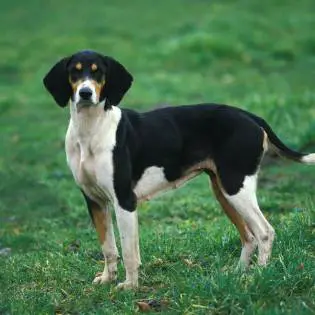
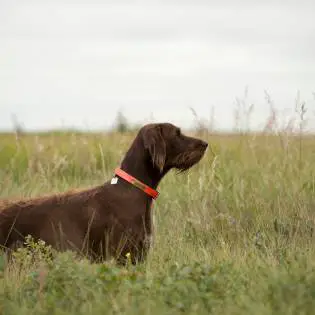


Share